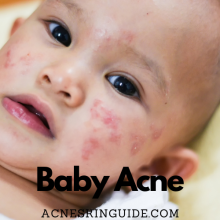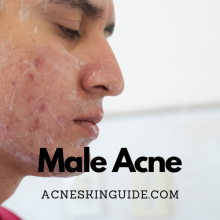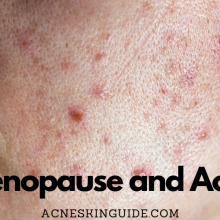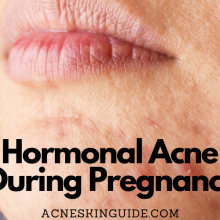Athlete’s Acne | Acne Skin Guide
Acne is a common issue for athletes and highly active individuals due to increased sweat, friction, bacteria buildup, and hormonal fluctuations from exercise. Key prevention strategies include using non-comedogenic products before/after workouts, promptly removing sweaty clothing, maintaining clean gear, and lifestyle factors like proper hydration and avoiding dietary triggers. Treatment options range from over-the-counter products with salicylic acid or benzoyl peroxide to prescription medications, light therapies, and extractions by a dermatologist for severe cases.
Having a consistent AM/PM skincare regimen tailored to one’s acne type, combined with gentle exfoliation, breathable athletic wear, and acne-safe makeup is crucial. While challenging, following an acne-fighting plan allows active individuals to get breakouts under control through commitment and positivity. Early professional treatment can also prevent acne scarring.
#1 Recommended Acne Treatment | #2 Recommended Acne Treatment |
 |  |

The Athlete’s Guide to Clear Skin: Preventing and Treating Acne Breakouts
For athletes and highly active individuals, dealing with acne can be a frustrating challenge. The increased sweat, friction, and buildup of bacteria and oils from exercise can easily clog pores and lead to breakouts on the face, back, chest and other areas. However, with the right preventive measures and treatments, athlete’s acne can be managed effectively.
The Main Causes of Athlete’s Acne
There are several key factors that contribute to acne flare-ups in athletic populations:
Sweat: Excessive sweating can mix with dead skin cells and oil on the skin’s surface to form a sticky paste that blocks pores and hair follicles. This traps acne-causing bacteria, leading to inflammatory lesions like pimples and cysts.
Friction: Tight clothing, equipment, helmets, and other gear rubbing on the skin can irritate follicles and cause acne mechanica, a type of friction acne. This is particularly common on the back, chest, and other areas where gear makes prolonged contact.
Buildup of Bacteria, Oils, and Dirt: During exercise, pores open and sweat production increases, allowing acne-causing bacteria like P. acnes as well as oils, dirt and debris to penetrate deep into follicles.
Hormones: Intense physical activity and athletic training can cause hormonal fluctuations and an excess production of sebum oil that clogs pores. This is especially problematic for teen athletes going through puberty.
Prevention Strategies for Active Individuals
Being proactive with skin care and lifestyle habits is key to keeping athlete’s acne at bay:
Pre-Workout: Start with a gentle, oil-free cleanser to remove dirt, oil and sweat from previous activity. Non-comedogenic sunscreens can also prep skin before hitting the gym or field.
During Workout: Remove sweaty clothing promptly after exercise. Use clean towels and avoid touching the face to prevent transferring acne-causing bacteria and oils.
Post-Workout: Shower as soon as possible with an acne-fighting body wash containing salicylic acid or benzoyl peroxide to unclog pores. Follow with a sweat-proof, non-comedogenic sunscreen, moisturizer and any other treatments.
Lifestyle Factors: Maintain proper hydration, get enough sleep, manage stress, and consider eliminating dietary triggers like dairy and high glycemic foods which can aggravate acne.
Potential Downside: Showering right after every workout may not be practical for some athletes, especially when training multiple times per day. In this case, cleansing face and body with acne wipes can help remove sweat and dirt until fully showering later.
Treatment Options for Breakouts
Despite best efforts, breakouts may still occur for active acne-prone individuals. Fortunately, there are many effective treatment options:
Over-the-Counter: Salicylic acid and benzoyl peroxide products can help dry out existing pimples and keep follicles clear. Spot treatments with maximum-strength formulas can rapidly target blemishes.
Prescription Medications: Dermatologists may prescribe oral antibiotics or Accutane to kill acne-causing bacteria. Topical retinoids are vitamin-A derivatives that unclog pores and reduce inflammation.
Light/Laser Therapies: Blue light and photodynamic therapy work by eliminating acne-causing bacteria through light exposure and can be done in-office.
Extraction: For painful whiteheads or cystic acne, injections or safe extraction by an experienced dermatologist or aesthetician may provide relief.
Potential Downside: Prescription treatments and professional procedures like extractions can be costly, especially for student athletes on a limited budget.
Athlete-Specific Skin Care Routines
While acne treatments target current blemishes, having a consistent skin care routine tailored to an active lifestyle is vital for keeping acne under control long-term.
AM Routine: Start the day with an oil-free, gentle cleanser and follow with an acne treatment product like a leave-on benzoyl peroxide cream or retinoid serum. Always top with a non-comedogenic sunscreen.
Pre/Post-Workout: Wearing sweat-proof, acne-fighting cleansers, gels and lightweight lotions during activity can cut down on breakouts. Remove sweaty clothes, cleanse skin, and apply treatments after working out.
PM Routine: At night, use a deeper pore-cleansing wash and follow with another leave-on treatment product and an oil-free moisturizer to repair and rebalance skin overnight.
Customize by Acne Type: Those with oily, dry, cystic, or other specific acne types need customized routines based on their individual needs and sensitivity levels.
Exfoliate: Gentle exfoliation 1-2 times per week with a soft brush or chemical exfoliant unclogs pores and smooths texture.
Potential Downside: While effective, acne regimens can be time-consuming for busy athletes to keep up with consistently. Setting phone reminders may help.
Beyond Skin Care – Managing Gear, Makeup and Self-Esteem
Other factors like equipment and self-confidence also play a role for active individuals dealing with acne:
Keep It Clean: Bodies, workout clothes, gear and equipment should be kept clean at all times to prevent transferring acne-causing bacteria. Breathable, moisture-wicking fabrics are ideal to minimize friction and excessive sweating against skin.
Sports Makeup: If wearing makeup during practices or competition, use acne-safe, non-comedogenic tinted sunscreens, mineral powders or lightweight cream foundations that won’t clog pores.
Emotional Impact: Frequent acne breakouts can understandably take a toll on an athlete’s confidence and self-esteem. Speaking to a counselor may help develop healthy coping strategies.
When to See a Dermatologist: Schedule an appointment if over-the-counter products aren’t providing sufficient relief, or if experiencing cystic acne, nodules, scarring or full-face inflammatory breakouts. Derms can provide medical-grade treatments and extraction.
The Bottom Line
While dealing with acne and breakouts can be challenging for active individuals, it doesn’t have to be debilitating. With some preventative measures, the right treatments, and a customized skin care routine, most athletes and fitness enthusiasts can get their acne under control. The key is sticking to a regimen – staying committed, patient and positive are also important for achieving clear, healthy skin.
#1 Recommended Acne Treatment | #2 Recommended Acne Treatment |
 |  |
Summary and FAQs
How can I prevent acne from developing on my back and chest from sweaty gear?
Here are some tips to help prevent acne from developing on the back and chest due to sweaty gear:
- Shower immediately after practice/games: Don’t let sweat, dirt, and bacteria sit on your skin for too long. Shower with a body wash containing salicylic acid or benzoyl peroxide as soon as possible after removing sweaty gear.
- Use clean towels: Place a clean towel or clothing guard between your skin and pads/gear during practices and games. This creates a barrier so the acne-causing bacteria isn’t directly transferred to your skin.
- Wear moisture-wicking fabrics: Choose athletic clothing made of breathable, sweat-wicking material like polyester or bamboo. This helps pull moisture away from your skin instead of trapping sweat against it.
- Apply acne sprays/wipes: Use acne-fighting body sprays, wipes or powders containing ingredients like salicylic acid on your back, chest and other prone areas before putting on gear.
- Avoid tight equipment: Opt for properly fitted and loose equipment when possible to prevent excessive friction and rubbing against your skin.
- Wash gear frequently: Make sure to regularly wash all pads, guards, jerseys and other gear with antibacterial detergent to remove built-up sweat, dirt and bacteria.
- Use acne body washes: In the shower, use a body wash or soap containing acne medicine to thoroughly clean your back, chest and any other areas exposed to gear.
Staying proactive about cleansing and using acne-fighting products on sweaty areas can help prevent gear from clogging pores and causing body breakouts.
Are there any medications that can help with hormonal acne for athletic teen girls?
Yes, there are several medications that can help treat hormonal acne in athletic teen girls:
- Birth control pills: Combined oral contraceptives that contain estrogen and progestin can be very effective for hormonal acne. The hormones help regulate the hormonal fluctuations that stimulate excess oil production and clogged pores. Common brands used include Yaz, Ortho Tri-Cyclen, and Estrostep.
- Spironolactone: This oral medication is a diuretic that blocks the effects of androgens (male hormones) on oil glands. By limiting androgen hormones, it helps reduce oil production and prevents hormonal acne flares. It’s often prescribed along with birth control pills.
- Anti-androgen medications: Drugs like flutamide and finasteride work by blocking the ability of androgen hormones to bind to their receptors in oil glands and hair follicles, limiting their acne-causing effects.
- Topical retinoids: Prescription retinoid creams, gels or lotions containing tazarotene or tretinoin can help unplug clogged pores and regulate excessive cell turnover from hormonal changes.
- Cortisone injections: For large, painful cystic acne lesions, dermatologists can directly inject a diluted cortisone medication to quickly reduce inflammation and help it heal.
It’s important for teen athletes to consult a dermatologist, as hormonal acne can be difficult to treat with over-the-counter products alone. Medications are most effective when combined with a good skincare regimen.
What acne treatments are safe to use during competition or athletic events?
Here are some acne treatments that are generally safe to use during competition or athletic events:
- Acne Patch Treatments
Hydrocolloid acne patches or stickers can be applied directly over individual pimples. They absorb fluid, protect the area, and allow medications to penetrate better. Popular options like Mighty Patch or COSRX Acne Pimple Patches are discreet and won’t interfere with performance. - Spot Treatment Gels/Creams
Quick-drying spot treatment gels or creams with maximum-strength benzoyl peroxide or salicylic acid can be dabbed on pimples before competition. Look for water-based, non-greasy formulas that won’t clog pores further or run when sweating. - Acne Tinted Moisturizers/BB Creams
Opt for oil-free, non-comedogenic tinted moisturizers or BB creams containing salicylic acid to provide light coverage and treatment in one. Sports mineral makeup powders with acne-fighting ingredients are also an option. - Cleansing Wipes
When showering isn’t possible, use salicylic acid or benzoyl peroxide acne cleansing wipes to remove sweat, oil and debris from skin before and after events. - Acne Treatment Masks
Overnight or short-contact treatment masks can be used the day/night before competition to deeply treat blocked pores and reduce existing breakouts.
Avoid extremely drying treatments or products with super high concentrations of active ingredients, as these may cause excessive peeling, redness or irritation that could negatively impact performance. Always do a patch test first.
How can I prevent acne scarring and pigmentation from breakouts?
Here are some tips to help prevent acne scarring and post-inflammatory hyperpigmentation from breakouts:
- Don’t pick or pop pimples: As tempting as it is, picking at acne lesions can lead to further inflammation, trauma to the skin, and increase the risk of scarring and discoloration.
- Use spot treatments: Applying spot treatments with ingredients like benzoyl peroxide, salicylic acid, or sulfur can help dry out blemishes faster and reduce inflammation that contributes to marking.
- Try fading treatments: Products containing azelaic acid, tranexamic acid, niacinamide, vitamin C, licorice root or other brightening agents can help fade post-acne marks and pigmentation more quickly.
- Exfoliate regularly: Gentle chemical exfoliants with alpha hydroxy acids or enzymes help slough off dead, pigmented cells and allow newer, smoother skin to surface.
- Use sunscreen: UV exposure can worsen hyperpigmented acne spots. Using a broad spectrum SPF 30+ sunscreen daily is crucial.
- Consider professional treatments: Procedures like chemical peels, microneedling, and laser therapies can improve acne scarring and pigmentation when done under a dermatologist’s supervision.
- Be patient: It takes time for the skin’s cellular turnover process to shed discolored cells. Most marks take 3-6 months to significantly fade with consistent treatment.
Addressing acne marks promptly and avoiding re-injury to the skin can go a long way in preventing permanent scarring or stubborn discoloration from forming.
Are there any special diet tips for managing acne in athletes?
Yes, there are some helpful dietary tips that can aid in managing acne for athletes:
- Stay hydrated: Drink plenty of water before, during, and after workouts. Dehydration can contribute to excess oil production and clogged pores.
- Eat antioxidant-rich foods: Load up on fruits and veggies high in antioxidants like vitamins A, C, and E which help fight acne-causing inflammation. Good options include berries, leafy greens, sweet potatoes, and tomatoes.
- Get enough zinc: This mineral is important for wound healing and preventing scar formation from acne. Zinc-rich foods include oysters, beef, cashews, and pumpkin seeds.
- Choose healthy fats: Foods with anti-inflammatory omega-3s like salmon, walnuts, chia and flax seeds can help reduce redness and swelling from acne.
- Limit dairy: The hormones and sugars in cow’s milk may trigger acne flare-ups in some people. Opt for non-dairy milk alternatives.
- Avoid simple carbs: Refined carbs and sugars cause spikes in blood sugar that can increase oil production. Choose complex carbs instead.
- Watch supplement ingredients: Look out for whey protein powders or supplements with potentially comedogenic (pore-clogging) oils.
- Don’t overdo iodized salt: Excessive iodine intake may worsen acne in some individuals. Use non-iodized salt or sea salt.
Fueling the body with nutrient-dense whole foods can help manage acne from the inside out for athletic individuals prone to breakouts. Limiting potential trigger foods is also advised.






